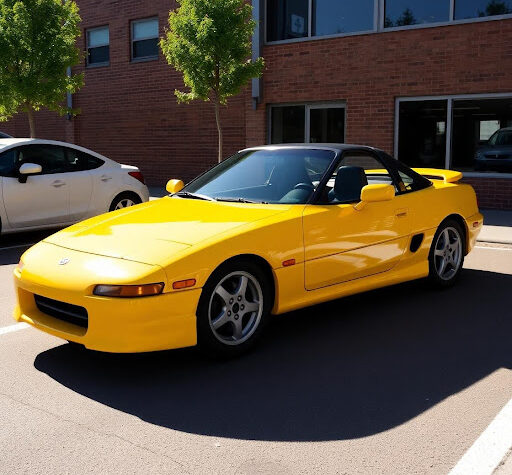
Talking Diesel is a Foreign Language
The diesel engine is still the number one choice for European car buyers.
 |
| American drivers would be hard pressed to call the European Touareg under-powered. Its V-10 diesel pumps out a whopping 553 lbs.- ft. of torque. |
|
|
While in Detroit for the auto show, I caught up with a few old friends, one of who’s in the process of changing his SUV (currently a Mercedes M-Class, in case you wanted to know). Volvo XC90, I asked him, or Volkswagen Touareg?
Shake of the head. Reports suggest that both could be underpowered, he said.
My reaction was surprise, to say the least. How can an SUV with close to 300 lbs.- ft. of torque available across almost the whole rev band be thought underpowered? Then I realized, we weren’t talking diesel here. This is still the land of the gas guzzler and we were at cross purposes.
Since around 90 percent of all SUVs sold in Europe are diesel powered, I had to bow out of the conversation with a sympathetic shrug. If you haven’t driven the V10 diesel Touareg with its 553 lbs.- ft. of torque, then you ain’t really lived in the modern world. The 2.5L diesel with 295 lbs.- ft. and the bonus of 28 mpg isn’t bad either.
As for the Volvo XC90, the view here is that you would be mad to buy anything other than the 2.4L L D5, a five-cylinder diesel, that is as smooth as any six cylinder.
Similarly, the BMW X5 is a rare beast here with anything other than a diesel engine, ironically exported from Spartanburg in South Carolina. But BMW won’t consider selling this SUV stateside until 2006 at the earliest when low-sulfur diesel becomes available.
Over here, diesel growth shows absolutely no signs of slowing down. Checking through the full-year 2003 sales for Western Europe, I came across the breakdown of sales for 4x4s and diesel passenger cars provided by the Association Auxiliare de l’Automobile.
Iceland has the highest penetration of 4x4s at 41 percent (latest figures are from January to September 2003) and Spain the lowest at 0.24 percent while the average is 6.1 percent.
On the diesel front, Austria leads with a 71.4 percent share and Greece is the lowest with a 1.32 percent share (there are complicated historical reasons for that). The Western European average is 42.37 percent.
In the U.K., Europe’s second highest market overall in 2003 with sales of 2.56 million, diesel volumes have doubled since 2000 and continue to provide the main emphasis to the market’s growth. It was, of course, a third record year of registrations for the U.K. and diesel sales reached a record 704,637 to take a 27.3 percent market share. The top selling diesel car was the Ford Mondeo.
The U.K. forecast is that diesel sales will grow 6.4 percent this year to take a 30 percent share and reach 34 percent share during 2005.
One other nugget from those Association Auxiliare de l’Automobile figures is that the average engine size in Western Europe is 1,740 cc. Portugal has the smallest engined cars at an average of 1,485 cc while Sweden and Switzerland are top with 1,980 and 1,993 respectively — not Germany as you might have expected which comes in at an average of 1,852 cc.
Two interesting tidbits to emerge from the latest figures from ACEA, the European automobile constructors’ association, were large increases in sales in the far North of Europe – Iceland and Finland. Further investigation reveals that this has not been caused by a sudden affluence afflicting the nations, but a fear of tax hikes.
 |
| While BMW exports diesel-powered X5s from its Spartanburg, S.C., assembly plant, the U.S. won’t get a diesel before 2006. |
Other markets that shone were Austria (up 7.6 percent to 300,714 sales) and Spain (up 3.8 percent to 1,383,017). Overall, the Western European market was down by 1.3 percent to 14.2 million units.
Japanese car makers took their total share to 12.7 percent with nearly 1.8 million sales, an increase of nine percent over 2002, Mazda ending the year as the best-performing Japanese brand. Sales were up 30.4 percent at 206,568 against 158,445 for 2002.
Nissan saw its sales increase 12.7 percent to 398,435 units for a 2.8 percent market share, while Toyota and Lexus recorded a 7.1 percent increase to 674,656 sales and a 4.7 percent market share. Honda was also up by 6.8 per cent to 192,401 units.
Biggest gains were by Korean carmakers who saw their sales rise 19.5 percent, helped by a storming 48.4 percent jump from Kia that took its sales to 107,631.
Losers included the Fiat Group, down 10 percent to 1,058,767 and Ford Group, down 4.4 percent, with all its brands posting falling sales. VW Group was down 2.5 percent, PSA Peugeot-Citro?n down 2.7 and Renault down 2.4. What of the General? GM sales were down, 2.8 percent to 1,391,699 — the bright spot was Saab where sales crept up one percent to 72,646.
This article was provided exclusively to Automotive Industries by Interchange, a U.K.-based automotive business agency and consultancy servicing media and corporate clients. Anthony Lewis is a partner in Interchange and can be contacted via e-mail at ajlewis@compuserve. com.





More Stories
Tools for Efficient Brake Maintenance
What Makes an Indian Motorcycle Stand Out from the Competition?
Why a Toyota MR2 for Sale is the Perfect Sports Car Choice